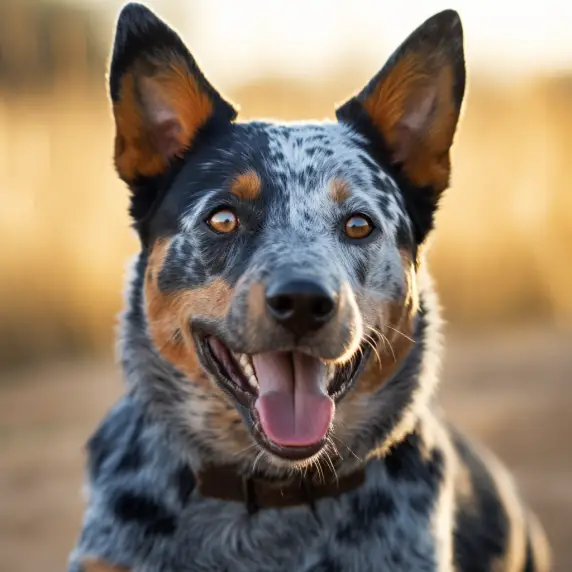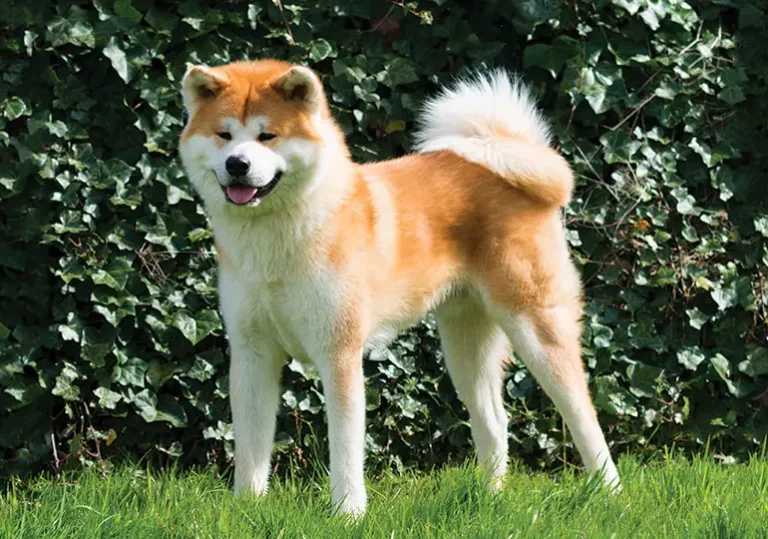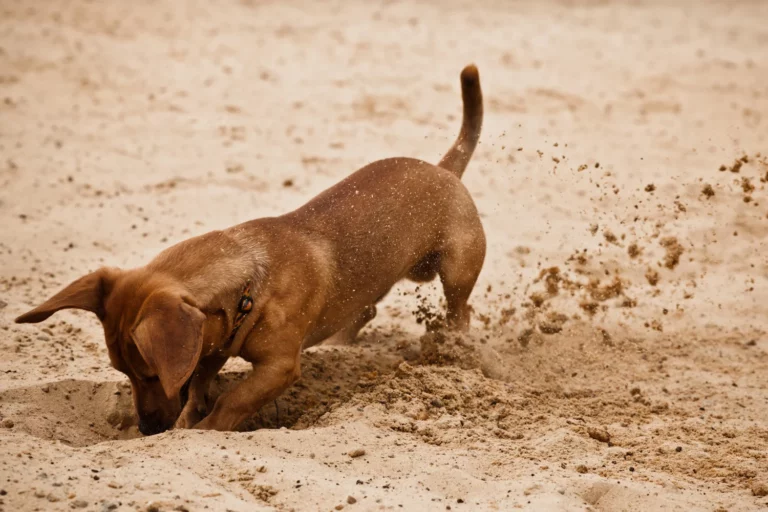7 Common Blue Heeler Behavior Problems & What To Do!
Blue Heelers, also known as Australian Cattle Dogs, are known for their intelligence, energy, and loyalty. However, with these admirable traits sometimes come behavior challenges. Blue Heeler behavior problems can range from mild quirks to more severe issues.
Understanding the root causes of these behaviors and knowing how to address them can lead to a more harmonious relationship between you and your four-legged friend.
Key takeaways:
- Blue Heelers are highly energetic and intelligent dogs.
- Their behavior problems can stem from a variety of reasons.
- Addressing these issues requires patience, understanding, and consistent training.
Short Answer: Blue Heeler behavior problems often arise from a combination of their herding instincts, high energy levels, and a lack of proper training or mental stimulation. Addressing these issues involves understanding their unique needs and employing consistent, positive training methods.
Historical Background and Traits
Diving into the history and inherent traits of the Blue Heeler, or Australian Cattle Dog, can offer us a deeper understanding of their behavior. Originally bred for cattle herding in the vast terrains of Australia, these dogs were designed to be hardy, alert, and agile.
Their primary purpose was to drive cattle over long distances across rough terrains, often biting at the heels of cattle to keep them moving – hence the name “Heeler.”
The inherent qualities that made Blue Heelers excellent cattle dogs, such as their high energy, intelligence, and assertiveness, are still present in the breed today.
And while these traits can be immensely beneficial, especially for active families and individuals, they can also lead to some of the common blue heeler behavior problems we observe.
Core Blue Heeler Behavior Challenges
1. Herding Instincts
One of the most prominent instincts in Blue Heelers is their tendency to herd. It’s not unusual to find them trying to round up other pets, or even children, in the household. They do this by nipping at heels, a natural guiding tactic they’ve inherited from their cattle-herding ancestors.
2. Aggression Stemming from Overprotection
Blue Heelers are immensely loyal to their families. While this loyalty is admirable, it can sometimes translate to overprotectiveness. This behavior can be particularly pronounced if they perceive someone as a threat to their owner or territory.
Proper and early socialization, exposing them to various people, animals, and environments, can help mitigate this protective aggression.
3. High Energy Levels
Bred to work, Blue Heelers have seemingly boundless energy. If they don’t receive adequate physical activity, this pent-up energy can manifest as hyperactivity or destructive behaviors. Thus, it’s essential to ensure they get regular and vigorous exercise, matching the intensity of their natural working environment.
4. Stubbornness and Independence
Being an intelligent and dominant breed, Blue Heelers have a streak of stubbornness. They often have their own understanding of situations and can occasionally challenge authority.
For owners, this means the importance of early and consistent training cannot be overstated. Setting clear boundaries and employing positive reinforcement techniques are key.
5. Separation Anxiety
Despite their fierce independence, Blue Heelers form strong bonds with their owners. This attachment can sometimes lead to separation anxiety when left alone for extended periods.
Alleviating this requires a combination of training and providing them with engaging toys, puzzles, and safe spaces during your absence.
6. Vocalization and Barking
Blue Heelers are vocal dogs. They bark to communicate, whether they’re alerting you to a potential threat or expressing dissatisfaction.
Training from a young age can help control excessive barking, ensuring it’s only used for essential communication.
7. Chewing and Destructive Behavior
Just as with any dog breed, boredom or anxiety can lead to chewing or other destructive behaviors in Blue Heelers. Providing them with appropriate toys and chews, coupled with training, can redirect this behavior and prevent potential damage to your belongings.

Blue Heeler Specific Behavioral Insights
Why Does My Blue Heeler Growl at Me?
Growling in dogs, including Blue Heelers, is a form of communication. If your Blue Heeler growls at you, it might be expressing discomfort, fear, or even pain. Sometimes, it’s a way for the dog to assert dominance or express dissatisfaction with a certain situation.
It’s essential to observe the circumstances surrounding the growl. For instance, if it happens during play, it could be playful communication. But if it’s during feeding or when touching a specific part of their body, it might indicate resource guarding or pain.
Always approach the situation with understanding, seeking professional advice if necessary.
Blue Heeler Suddenly Aggressive
Sudden aggression in Blue Heelers can be alarming. It’s crucial to identify the trigger factors, which might include territorial disputes, fear, or even medical issues causing discomfort. Early intervention is key.
By identifying and addressing the root cause, whether it’s through behavioral training or medical intervention, you can prevent potential harm and maintain a harmonious relationship with your pet.
Blue Heeler Aggression Training
Addressing aggression requires a blend of patience, understanding, and professional guidance. Employing positive reinforcement methods, like rewarding desired behaviors with treats or praise, can be effective.
Equally important is avoiding punishment-based techniques, which can exacerbate aggression. Engaging a professional dog trainer or behaviorist who understands the breed can provide targeted solutions and training approaches.
Female Blue Heeler Temperament
While individual personalities vary, some owners observe that female Blue Heelers can be more independent and protective than their male counterparts. Understanding these gender-specific traits can aid in training and daily interactions.
Being aware of hormonal changes, especially during heat cycles, can also offer insights into behavior shifts.
Blue Heeler Quirks
Every breed has its quirks, and the Blue Heeler is no exception. Some of their unique habits include the “Heeler spin,” where they rapidly chase their tail, often before lying down. They might also exhibit a strong prey drive, being especially interested in moving objects like cars or bikes.
Being aware of these quirks helps owners anticipate behaviors and ensure the safety and happiness of their pets.
Are Blue Heelers Aggressive Towards Other Dogs?
By nature, Blue Heelers can be territorial, which might lead to aggression toward unfamiliar dogs. However, this isn’t a blanket trait for the breed. Early socialization, where the Heeler is exposed to various dogs and environments, can mitigate this aggressive tendency.
Owners should always supervise interactions, especially in unfamiliar settings or with unfamiliar dogs.
When Do Blue Heelers Calm Down?
Blue Heelers are known for their boundless energy, especially during their puppy and adolescent stages. Many owners wonder: when will the calm set in? Typically, as they transition from adolescence into adulthood—around 2 to 3 years of age—their energy levels might start to wane.
However, even as adults, they require regular exercise and mental stimulation. Engaging in activities together, like herding or agility training, can help channel their energy productively.
Misconceptions About Blue Heeler Behaviors
Blue Heelers, like many breeds, are subject to a slew of myths and misconceptions that can influence how they’re treated, trained, and even understood by the public and potential owners. Addressing these myths is crucial because operating on mistaken beliefs can sometimes exacerbate behavior issues or hinder effective training.
Addressing Common Myths
- “Blue Heelers are Naturally Aggressive.”
While Blue Heelers have protective instincts and can be wary of strangers, branding them as naturally aggressive can be misleading. Most times, aggressive behaviors are due to insufficient socialization, fear, or specific triggers rather than an inherent breed trait.
- “They’re Unsuitable for Families with Kids.”
When properly trained and socialized, Blue Heelers can be wonderful family dogs. Their herding instinct might make them prone to nipping at heels, but with the right guidance, they can learn boundaries and be gentle with children.
- “Blue Heelers Need Constant Physical Activity or They’ll Destroy Your Home.”
While they are high-energy dogs that thrive on activity, they don’t necessarily need non-stop physical exercise. Mental stimulation is just as crucial. Training sessions, puzzle toys, and interactive games can keep them engaged and prevent destructive behaviors.
- “They’re Impossible to Train Due to Their Stubbornness.”
It’s true that Blue Heelers have an independent streak, but to say they’re impossible to train is a misconception. With consistency, patience, and positive reinforcement, they can be highly trainable and can excel in various canine sports.
How Misunderstanding Can Exacerbate Behavior Issues
When owners or the general public misunderstand Blue Heeler behaviors, it can lead to problems. For instance, labeling a Heeler as “aggressive” without understanding the underlying triggers can result in missed opportunities for corrective training or socialization.
Additionally, expecting them to be “natural herders” without guidance can lead to unwanted nipping or herding of children and other pets.
Furthermore, treating them as just “working dogs” without addressing their emotional needs can lead to feelings of isolation or anxiety. It’s vital to approach the breed with an open mind, free from biases and misconceptions, to foster a harmonious and understanding relationship.
Training and Mitigation Strategies
Understanding the unique challenges and strengths of the Blue Heeler breed is the first step to fostering a harmonious bond with these energetic dogs. However, mere understanding isn’t enough. Implementing tailored training strategies ensures that your Blue Heeler thrives in your care, minimizing undesired behaviors.
Early Socialization
Blue Heelers benefit immensely from early socialization. As puppies, exposing them to different environments, people, and other animals can set the stage for a well-adjusted adult dog. The key is to ensure that these experiences are positive, building their confidence.
- Importance of Exposing to Different Environments:
Introducing your Blue Heeler to various settings, noises, and situations can help prevent fearful or aggressive responses later on. Whether it’s a bustling city park or a quiet country trail, varied experiences can make them more adaptable.
- Preventing Overprotectiveness:
While their loyalty and protective instincts are admirable, without early socialization, it can tilt into overprotectiveness. Regular interactions with different people and animals can help in preventing unnecessary guarding behaviors.
Positive Reinforcement
One of the most effective training methods, especially for Blue Heelers, is positive reinforcement.
- Rewarding Good Behavior:
Using treats, praise, or toys to reward desired behaviors can motivate your dog to repeat them. Over time, these positive behaviors become ingrained. - Avoiding Punishment Techniques:
Negative training methods, like shouting or physical punishment, can harm your relationship with your Blue Heeler and may exacerbate behavioral issues. Instead, focus on redirecting unwanted behaviors and reinforcing the desired ones.
Mental Stimulation
Blue Heelers aren’t just physically active; they’re sharp thinkers, too. Catering to their mental needs is crucial.
- Puzzle Toys, Training Sessions, and Games:
Engage their minds with toys that challenge them to think. Regular training sessions, whether it’s learning new tricks or obedience commands, also keep their minds sharp. Games, like hide and seek or fetch, can be both physically and mentally stimulating.
- Curbing Destructive Behaviors:
Often, destructive behaviors arise from boredom. By keeping their minds engaged, you reduce the chances of them turning to chewing shoes or digging up gardens out of sheer boredom.
Consistent Training
Blue Heelers, with their independent streak, respect consistency.
- Establishing Routines:
Like all dogs, Blue Heelers find comfort in routine. Whether it’s feeding, walking, or training times, sticking to a routine can provide a sense of security and predictability.
- Maintaining Authority Without Aggression:
It’s crucial to establish yourself as the leader of the pack. However, this doesn’t mean resorting to aggressive tactics. Instead, maintain authority through consistent training, setting boundaries, and showing calm assertiveness.
FAQs on Blue Heeler Behavior Problems
Why does my blue heeler nip at strangers?
Blue Heelers have a strong herding instinct, and nipping at heels is a behavior they exhibit when herding cattle. When they nip at strangers, it’s often an instinctual attempt to “herd” or control the movement of the person. Proper training and socialization can reduce this behavior.
How can I calm my hyperactive blue heeler?
Blue Heelers are naturally energetic. To calm a hyperactive one, ensure they get plenty of exercise and mental stimulation. Engaging them in vigorous play, agility training, and brain games can help expend that excess energy.
Are blue heelers naturally aggressive?
While Blue Heelers can be protective and assertive, they aren’t naturally aggressive. However, without proper training and socialization, their protective instincts can manifest as aggressive behavior. Early exposure to various environments and consistent training can keep aggressive tendencies in check.
How to stop my blue heeler from being destructive when left alone?
Destructive behavior often stems from boredom or separation anxiety. Before leaving your Blue Heeler alone, ensure they’ve had adequate exercise. Also, provide them with puzzle toys or chew toys to keep them engaged. Training sessions on separation can also help reduce anxiety.
How do you deal with blue heeler aggression?
Addressing Blue Heeler aggression requires understanding the root cause – whether it’s fear, dominance, territoriality, or something else. Once identified, utilize positive reinforcement training to redirect aggressive behaviors. If aggression persists, consider consulting a professional dog trainer.
How do you discipline a blue heeler?
Discipline doesn’t mean punishment. Instead, it involves setting clear boundaries and being consistent with training. Use positive reinforcement to encourage good behavior. If they exhibit undesired behavior, redirect them rather than resort to punitive measures.
What are Blue Heelers bad habits?
Some common issues with Blue Heelers include nipping due to their herding instincts, being overly protective, barking excessively, and sometimes being stubborn or independent. These aren’t inherently “bad” but can be challenging for owners. Proper training can help manage these behaviors.
Why does my blue heeler bite me?
Biting can be a result of several factors, including teething (in puppies), playing, trying to establish dominance, or even herding instincts. It’s essential to ascertain the reason behind the biting. Once you understand the cause, you can employ specific training techniques to curb the behavior.
Conclusion
The Blue Heeler, renowned for its vibrant energy and sharp intelligence, certainly comes with a set of unique behavioral quirks. While some of these behaviors can be challenging for dog owners, understanding the breed’s origins and inherent instincts goes a long way in managing them.
With consistent training, socialization, and plenty of mental and physical exercise, a Blue Heeler can be both a loyal companion and a well-behaved member of the family. Remember, every dog, irrespective of its breed, seeks love, understanding, and guidance from its human.
Embrace the journey of learning with your Blue Heeler, and you’ll find yourself rewarded with unwavering loyalty and affection.
Additional Resources
For those seeking more in-depth knowledge or assistance with their Blue Heelers, the following resources can prove invaluable:
Books:
- “The Complete Guide to Australian Cattle Dogs” by Tarah Schwartz: A comprehensive guide that covers everything from breed history to training tips.
- “Blue Heelers: A Complete Pet Owner’s Guide” by Richard G. Beauchamp: An insightful book into the breed’s temperament, care, and common issues.
Websites:
- The American Kennel Club (AKC): Offers breed-specific information, training tips, and general dog care advice.
- Blue Heeler Lovers Community Forum: A forum dedicated to Blue Heeler enthusiasts, where you can share experiences and ask questions.
Training Videos:
- Zak George’s Dog Training Revolution: While not specific to Blue Heelers, Zak offers practical training tips suitable for high-energy breeds.
Local Dog Training Centers:
- Many areas have local training centers or dog schools that offer breed-specific classes or can provide advice tailored to Blue Heelers.
Dog Behaviorists:
- If you’re facing severe behavioral challenges with your Blue Heeler, it might be worthwhile to consult with a professional behaviorist who can offer tailored strategies and insights.
Remember, while these resources are helpful, the bond you foster and the consistent training you provide play the most significant role in shaping your Blue Heeler’s behavior.







